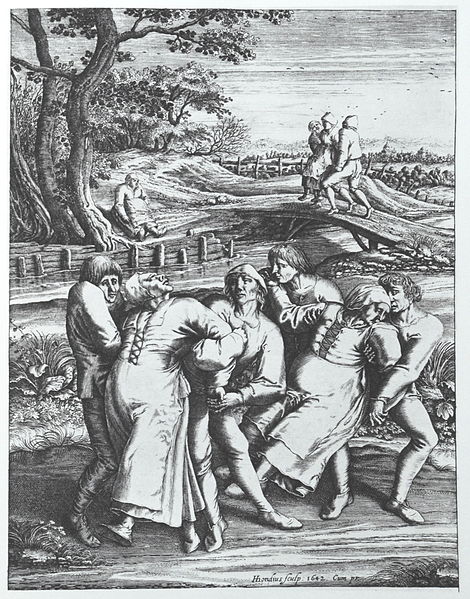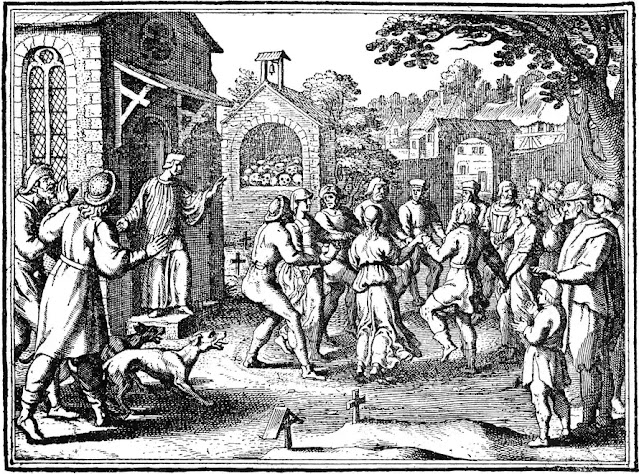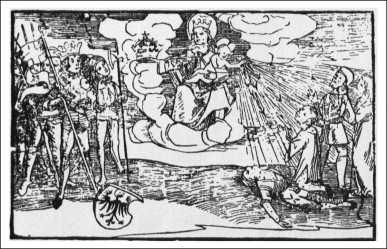STRANGE DANCING EPIDEMICS
It is the story of a
deadly “flashmob” in the Middle Ages which continues to intrigue specialists.
Strasbourg, summer 1518.
In the narrow streets of the city and in the squares, dozens of people dance
frantically to the rhythm of tambourines, violas and bagpipes. But the
atmosphere is not festive. The scenes are even "terrifying", writes
the historian of medicine John Waller in The Dancing Plague (Sourcebooks
editions), a reference work on the subject, published in 2009.
[This picture is collected from Wikimedia Common which is licensed under CC 1.0]
Women, men and children
with this strange “dancing mania” cry out, begging for help, but cannot stop.
They are in a trance. The symptoms are shown as “vague eyes; face turned to the
sky; their arms and legs moving with spasmodic and tired movements; their
shirts, skirts and stockings, soaked in sweat, stuck to their emaciated bodies,
”describes John Waller. In a few days, the cases multiply as a virus spreads,
sowing fear and death in the Alsatian city. Up to fifteen dancers died every
day, according to a witness at the time, victims of dehydration or
cardiovascular accidents.
It was a woman, Frau
Toffea, who opened the ball for this dancing death on July 14. Epidemiologists
would call her "patient zero", the first individual infected during
an epidemic. The fate of this woman was traced by Paracelsus (1493-1541), a
Swiss physician and alchemist, known as one of the founders of toxicology. Fascinated
by this collective episode, he came to the scene in 1526 to investigate.
This July 14, 1518,
therefore, Frau Toffea begins to jiggle, alone, in the streets. Despite her
husband's pleas, fatigue, and bloody feet, she continued for six days and
nights, just interspersed with a few naps. In the meantime, other people have
joined in the dance. As of July 25, 50 individuals are infected, they will be
in total more than 400. The verdict of the doctors is in the direct line of the
humoral theories of the time: the disease is due to a "too hot
blood". The city council then decides to cure evil with evil. Space is
left for the dancers and dozens of professional musicians are hired to
accompany them, night and day.
Serious public health
mistake! By showing off the dancers in this way, the authorities are only
promoting contagion. Faced with failure, the council turned around at the end
of July: the platforms were dismantled, the orchestras banned. But the
phenomenon will not end until a few weeks later, when the dancers will be
escorted to Saverne, one day from Strasbourg, to attend a ceremony in honor of
Saint Guy, protector of patients with chorea (abnormal movements).
After almost five
hundred years, this episode continues to intrigue specialists. Because it is
not a legend. The dancing mania in Strasbourg, which is neither the first nor
the last dance epidemic, is one of the best documented. It is even the only one
to have been able to be reconstituted so precisely, underlines John Waller,
probably because it arrived after the invention of the printing press, in a
city having formalized a bureaucracy.
In total, about twenty
comparable episodes were reported between 1200 and 1600. The last would have
occurred in Madagascar, in 1863. A variant, tarantism, has also been described
in Italy: the disease occurred after a hypothetical bite of the spider Lycosa tarentula,
and dancing (tarantella) was an integral part of the treatment.
Over the centuries,
several scenarios have been put forward to explain the Strasbourg epidemic:
ergotism (poisoning by rye contaminated with a mycotoxin), heretical cult,
demonic possession, or even collective hysteria. For John Waller, context
played a major role. Trance phenomena, he writes, are more likely to occur in
individuals who are psychologically vulnerable, and who believe in divine
retribution. However, these two conditions were met in Strasbourg. The city had
been struck by an unusual succession of epidemics and famines; and its
inhabitants believed in Saint Guy, able as much to inflict as to cure diseases,
by dancing in particular.
THE ANCESTOR OF RAVE-PARTIES?
Could a dance epidemic
break out in the 21st century? Unlikely, according to Bruno Falissard. Today's
conversions are rather gastroenterological or rheumatological manifestations,
“reasonably” compatible with the data of science. This does not prevent the
emergence of collective forms. For example, it is questionable whether the
epidemic of minor forms of gluten intolerance observed in many countries is not
actually a collective conversive manifestation. "
Some dare to draw a
parallel between these dancing manias and the monster rave parties of today
during which the dancers can sway in a trance, at the risk of falling from
exhaustion. But there are some fundamental differences: the use of recreational
drugs is a big part of clubbers' trance. And the latter is probably more
euphoric than the terrified choreomaniacs of the Middle Ages.






0 Comments